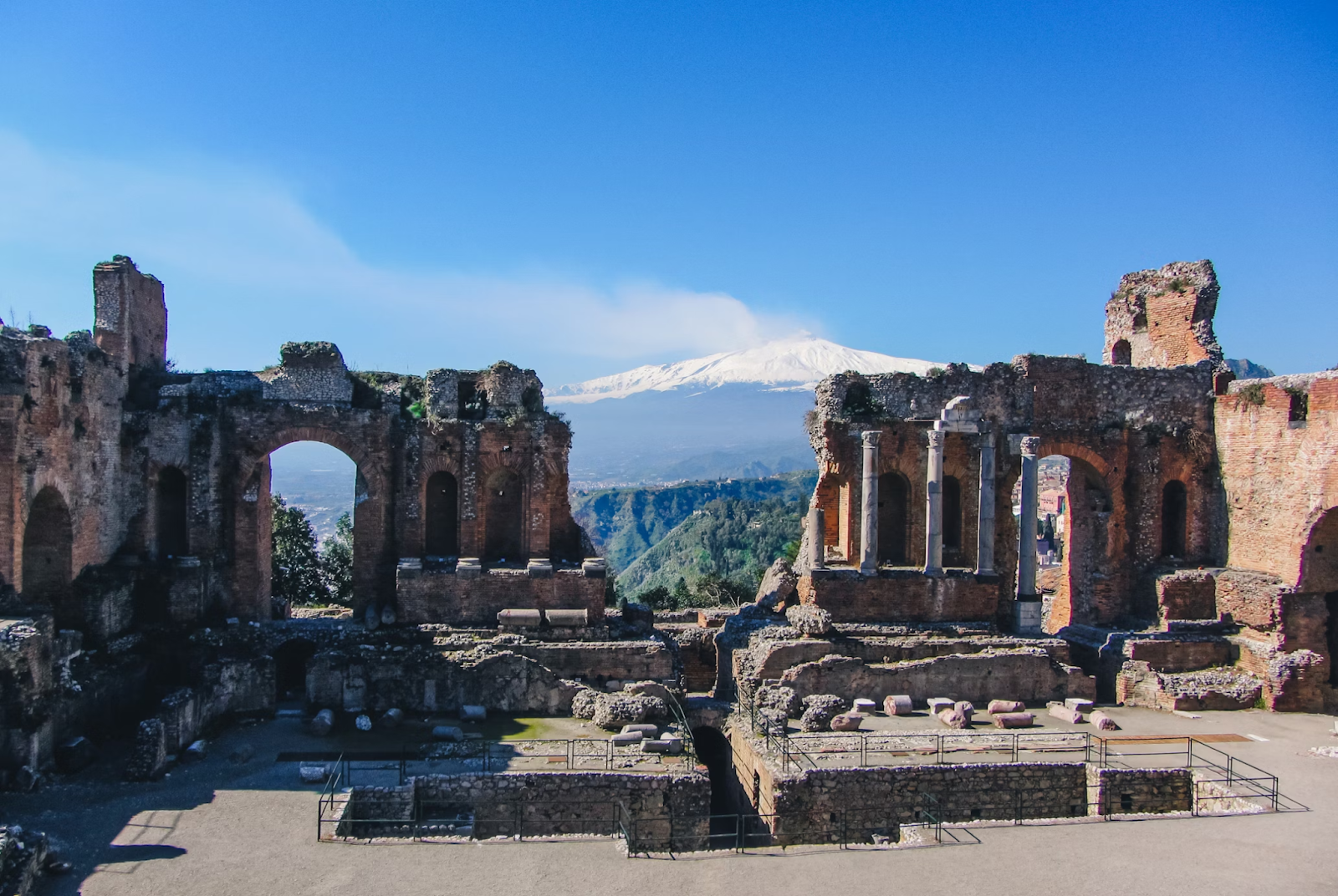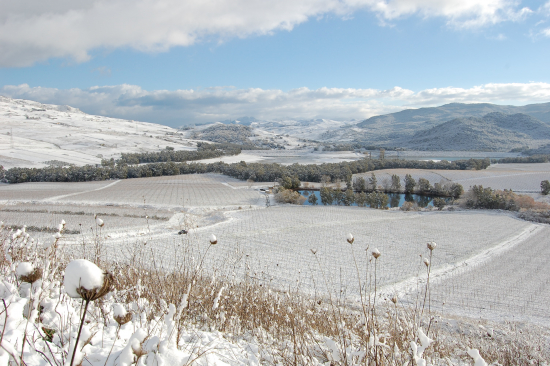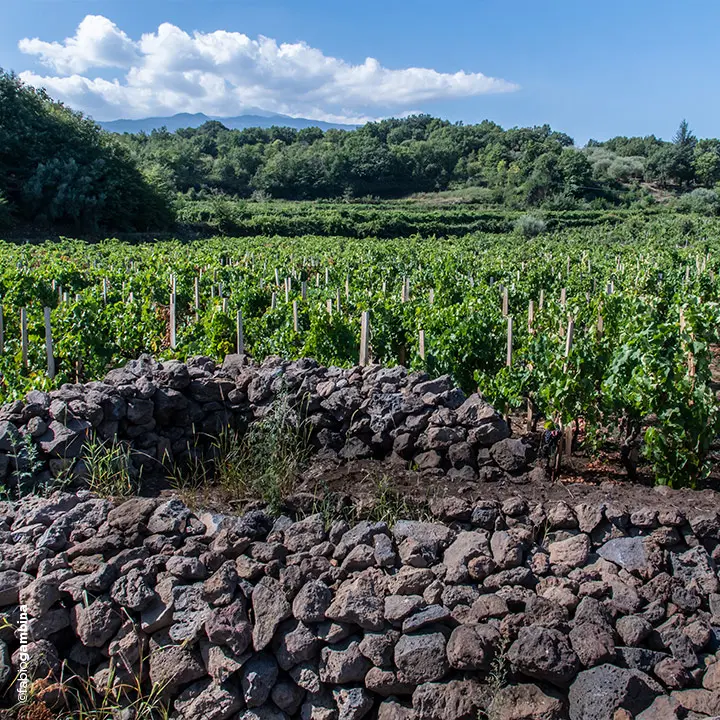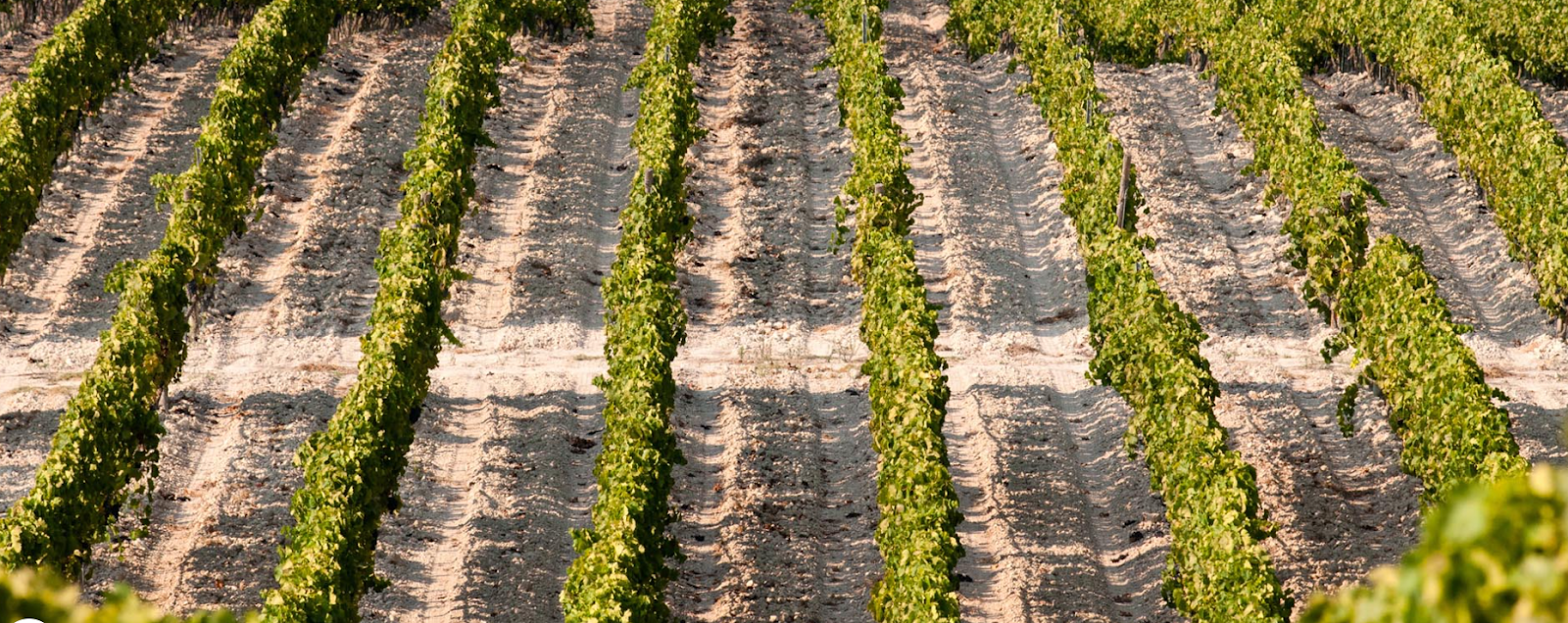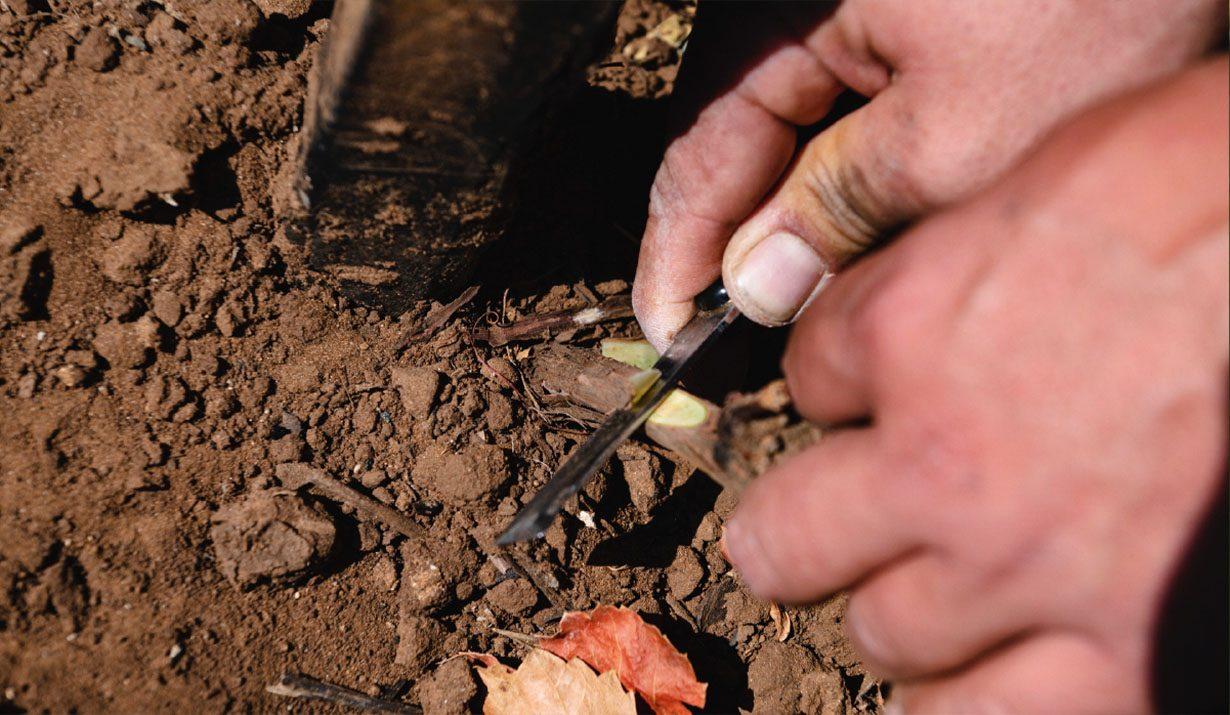- Wine Color/Type
- Top Occasions
- Unique Wines
- Surprise Me!
Sicily is Not What You Think
Movies like Godfather and Malena showcase the beauty of Sicily, the largest island in the Mediterranean Sea. The sunshine, lemon trees, and the beaches are the signatures of Sicily, and, of course, wine.
Standing at a crossroads in the Mediterranean Sea, Sicily has a rich history and receives influences from different cultures. The Phoenicians, Greeks, Romans, Arabs, Normans, and Spanish all occupied the island, leaving behind a unique and rich culture.
Such a rich culture has had a significant impact on winemaking. The Greeks brought vines to Sicily, and winemaking has been longstanding on the island. However, in the wine scene, Sicily is a place that would probably defy your expectations.
The Greek theater in Taormina and Mount Etna (Photo: Casey Lovegrove, Unsplash)
An Island, or a “Continent”
In movies and ads, Sicily is shown as sunny and warm due to its location on the 38th Parallel. It is often depicted as a beautiful destination for tourists.
However, locals often refer to Sicily as a "continent" for its vast landmass, varied topography, and diverse climates. Different parts of Sicily exhibit distinct climates, with unique microclimates found within wine regions. Mount Etna is the highest peak on the island, and approximately one-fourth of the island is covered with mountains.
In recent years, Mount Etna has emerged as a premium wine region because of its cooler climate, high elevation, and volcanic soils, earning it the nickname "an island inside of an island." In southern Italy, ripeness is rarely a problem. Surprisingly, on Mount Etna, some years the grapes couldn’t reach optimal maturity due to low temperatures and excessive rain during the growing season.
In the northwest of the island near Palermo, there are vineyards in Piana degli Albanesi. These vineyards are located on hills that are over 700 meters high. The area experiences snowy winters. Here, indigenous and international grape varieties express themselves differently, with cool-climate grapes like Chardonnay and Pinot Noir thriving. In the context of global warming, while many other southern wine regions have to deal with earlier and earlier harvest dates each year, Sicily's mountainous areas offer favorable conditions for producing high-quality wines.
The vineyard of Cusumano Tenuta Ficuzza in Piana degli Albanesi covered by snow. (Credit: Cusumano)
The Land with Every Shade
The hype of volcanic wines has brought Sicily to the spotlight, particularly Etna. The mineral-rich volcanic soil is a mixture of different layers of black lava. Volcanic soil drains well, protecting vines from phylloxera. In Etna, old vines grow without grafting due to this unique soil quality.
Furthermore, volcanic soils are very fertile, particularly rich in iron and potassium, which can lend a “salty sweet savory” taste to the resulting wines. Besides Etna, the nearby small island of Pantelleria and the Aeolian islands are of volcanic origin.
The vineyard of Donnafugata in Etna with volcanic soil and black lava stones (Photo: Fabio Gambina, credit: Donnafugata)
However, the vast majority of Sicily’s soil is not volcanic. In the southeast of Sicily, in Val di Noto, the soil is white limestone with chalk. This soil helps retain water and keeps the vines cool.
This is where Nero d'Avola, a famous Sicilian grape, comes from. This results in Nero d’Avola with great structure and acidity. Similarly, on the west coast near Agrigento, white chalk also dominates, resulting in wines with great freshness.
The vineyard of Planeta Tenuta Buonivini in Noto with white limestone chalk soil (credit: Planeta)
In the historic winemaking center of Sicily, Vittoria, the signature color is red. The soil in Vittoria is called “Terra Rossa,” and it consists of rocky limestone covered by a top layer of red ferrous sandy soil. The sandy soil is very poor, which is favorable for Frappato, producing quality varietal wines from this grape that’s believed to be fruity and lacking in structure.
The vineyard of Arianna Occhipinti in Vittoria with Terra Rossa red sandy soil (credit: Azienda Agricola Arianna Occhipinti)
Kaleidoscope of Wine
We often associate Italy with bold, tannic red wines. Sicily is no exception, with Nero d’Avola being the most famous Sicilian wine grape for a long time. We naturally think Sicily is a red wine region. Nero d’Avola comes in various styles. Many expected it to be bold, rich, structured with ripe fruits, ample tannins, and vibrant acidity, there are lighter, fresh, easy-drinking elegant Nero d’Avola from places with chalky soil and higher elevation.
The rising star, Nerello Mascalese from Etna, produces elegant wines reminiscent of Pinot Noir or Nebbiolo. The wines feature red fruits and wild berries, earthy and mineral notes, and sometimes a hint of smokiness. With its searing acidity and tannin structure, Etna Rosso is usually great for aging.
White varieties are not to be overlooked. More than half of the vineyard area in Sicily is planted with white grapes. Grillo, Catarrato, and Inzolia are the traditional wine grapes in Sicily, used to make the famous fortified Marsala wine. But in recent years, many more high-quality varietal wines have been produced.
Carricante, the main grape for Etna Bianco, is getting attention for its Riesling-like taste profile. The grape features lean acidity, salinity, and orchard fruit, and with age, it shows a savory profile with beeswax flavor.
Zibbibo, commonly known as Muscat d’Alexandria, also thrives in Sicily. Traditionally used to make passito sweet wine, dry Zibbibo is now favored by many winemakers.
With its rich culture and relatively loose wine production regulations, Sicily boasts more than 70 indigenous varieties as well as dozens of international ones. You may find the chillable, juicy Frappato for summer sipping, or the robust Perricone for a hearty meal, a tropical yet balanced Chardonnay, a velvety, opulent Merlot, an aromatic Gewurztraminer, or a rich, spicy Syrah.
As a wine region with a rich history, in the modern wine scene, Sicily is still relatively new. It has transformed its image from a bulk wine region with uninteresting table wines of large volume to one of the most exciting wine regions for new generation winemakers and foreign talent to settle in.
The land itself provides a big advantage; the natural setting makes Sicily naturally sustainable. Being the largest organic wine region in Italy, certified organic vineyards account for more than 30% in Sicily. The vineyards in Sicily have great biodiversity, which prepares the island for the climate challenges to come.
Dear VinoVossers, are you already excited about Sicily and its amazing wines? Maybe you have a whole different understanding of the island. Here, Vinovoss wine expert Sylvia, who has lived in Sicily, has selected some great, interesting Sicilian wines for you to explore.
[insert:wine:marco-de-bartoli-vignaverde-2019]
[insert:wine:cos-zibibbo-in-pithos-2021]
[insert:wine:planeta-chardonnay-2021]
[insert:wine:donnafugata-sul-vulcano-etna-bianco-2020]
[insert:wine:cusumano-syrah-2021]
[insert:wine:tenuta-delle-terre-nere-etna-santo-spirito-rosso-2021]
[insert:wine:occhipinti-il-frappato-sicilia-2021]
[insert:wine:marabino-archimede-riserva-2014]
Sylvia Ba
Latest articles

